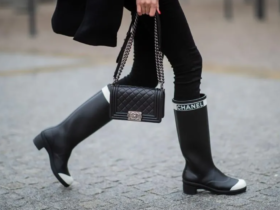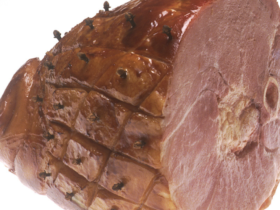The kuffeye, also known as keffiyeh or kufiya, is a traditional Middle Eastern headscarf that has found its way into global fashion. Known for its distinctive pattern and cultural significance, the kuffeye is a versatile accessory that can be styled in various ways. In this comprehensive guide, we will explore the history and significance of the kuffeye, different styles, and how to incorporate it into your fashion wardrobe.
What is a Kuffeye?
Kuffeye is a traditional headscarf originating from the Middle East, particularly associated with Arab culture. It is typically made from cotton or a cotton blend and features a distinctive checkered or patterned design. The kuffeye is worn for practical reasons, such as protection from the sun and sand, and as a symbol of cultural identity.
Kuffeye in Arabic Culture
Kuffeye Arabic culture holds significant meaning. Traditionally, it is worn by men and symbolizes heritage, solidarity, and respect. The kuffeye is often associated with Bedouin tribes and has become a symbol of Palestinian nationalism in modern times.
History of the Kuffeye
The kuffeye has a rich history that dates back centuries. Originally used by Bedouin tribesmen to protect themselves from the harsh desert environment, it has evolved into a symbol of cultural pride and political statement.
Early Beginnings
The kuffeye’s origins can be traced back to ancient Mesopotamia, where it was used by shepherds and farmers. Its practical design provided protection from the elements, making it an essential accessory for those living in arid climates.
Modern Significance
In the 20th century, the kuffeye became a symbol of Palestinian nationalism and resistance. It was popularized by figures such as Yasser Arafat, who wore it as a symbol of solidarity. Today, it is worn by people worldwide, both as a fashion statement and a symbol of cultural identity.
Kuffeye Styles
There are various styles of kuffeye, each with its unique design and cultural significance. Here are some popular styles to consider:
Traditional Kuffeye
The traditional kuffeye style features a black-and-white checkered pattern. This classic design is widely recognized and remains a popular choice for those looking to honor the kuffeye’s cultural heritage.
Red and White Kuffeye
The red and white kuffeye is another popular variation, often associated with Jordanian and Saudi Arabian culture. This style is known for its vibrant color and distinctive pattern.
White Kuffeye
White kuffeye is a more contemporary and versatile option. Its plain design makes it suitable for various outfits and occasions, allowing for a minimalist yet stylish look.
Modern Fashion Kuffeye
In recent years, the kuffeye has been incorporated into modern fashion, with designers creating new patterns and styles. These fashion-forward kuffeyes are made from various materials and feature unique designs that appeal to a broader audience.
How to Wear a Kuffeye
Wearing a kuffeye can add a unique and stylish touch to your outfit. Here are some popular ways to style a kuffeye:
Traditional Head Wrap
The traditional head wrap is the most common way to wear a kuffeye. Here’s how to do it:
- Fold the Kuffeye: Fold the kuffeye in half diagonally to form a triangle.
- Place on Head: Place the folded kuffeye over your head with the middle point hanging down your back.
- Wrap Ends: Take the two ends of the kuffeye and wrap them around your neck, crossing them at the back and bringing them to the front.
- Tuck or Tie: Tuck the ends under the kuffeye or tie them at the front for a secure fit.
Scarf Style
For a more casual look, you can wear the kuffeye as a scarf. Here’s how:
- Fold the Kuffeye: Fold the kuffeye into a triangle.
- Drape Around Neck: Drape the kuffeye around your neck with the middle point hanging down your chest.
- Wrap and Tuck: Wrap the ends around your neck and tuck them under the kuffeye for a cozy and stylish scarf.
Shawl or Cape
The kuffeye can also be worn as a shawl or cape for added warmth and style. Here’s how:
- Open Kuffeye: Open the kuffeye fully without folding it.
- Drape Over Shoulders: Drape the kuffeye over your shoulders like a shawl or cape.
- Adjust: Adjust the fit so that it covers your back and shoulders, providing a comfortable and stylish layer.
Kuffeye in Modern Fashion
The kuffeye has found its place in modern fashion, with designers incorporating it into various styles and outfits. Here are some ways the kuffeye is being used in contemporary fashion:
Street Style
The kuffeye has become a staple in street style, often worn as a statement piece. It can be paired with casual outfits, such as jeans and a t-shirt, or layered with jackets and coats for a chic urban look.
High Fashion
High fashion designers have embraced the kuffeye, incorporating it into runway shows and collections. These designs often feature luxurious materials and intricate patterns, elevating the traditional kuffeye to a high fashion accessory.
Festivals and Events
The kuffeye is a popular choice for festivals and events, where it adds a touch of cultural flair to any outfit. It can be worn as a head wrap, scarf, or even a belt, making it a versatile accessory for any occasion.
Where to Buy Kuffeye
If you’re wondering where to find kuffeye near me, there are several options to consider. From local stores to online shopping, here are some ways to find the perfect kuffeye:
Local Stores
Many clothing and accessory stores carry kuffeyes, especially those that specialize in Middle Eastern or cultural items. Check out stores in your area that focus on traditional clothing and accessories.
Online Shopping
Online shopping offers a vast array of options for finding kuffeyes. Websites like Amazon, Etsy, and eBay have extensive selections, including handmade and unique designs. You can also find specific brands and styles that may not be available in local stores.
Specialty Shops
Visit specialty shops that focus on Middle Eastern or cultural items. These stores often have high-quality kuffeyes that cater to specific needs, such as traditional or modern styles.
DIY Kuffeyes
Creating your own kuffeyes can be a fun and creative project. Whether you’re sewing, knitting, or repurposing fabric, DIY kuffeyes allow you to customize the style, color, and fit to your liking.
Sewing a Kuffeyes
One of the easiest ways to make a DIY kuffeyes is by sewing your own. Here’s a simple guide to get you started:
Materials Needed:
- Cotton or cotton blend fabric (1 meter)
- Scissors
- Sewing machine or needle and thread
Instructions:
- Cut Fabric: Cut the fabric into a square (approximately 1 meter by 1 meter).
- Hem Edges: Fold the edges over and sew a hem to prevent fraying.
- Iron: Iron the fabric to remove any wrinkles and create a crisp finish.
Knitting a Kuffeyes
If you enjoy knitting, you can create a knitted kuffeyes with soft yarn. Here’s how:
Materials Needed:
- Yarn (choose a soft, warm type)
- Knitting needles
- Scissors
Instructions:
- Cast On: Cast on stitches to create a width of approximately 1 meter.
- Knit: Knit in a simple pattern (such as garter stitch) until the length reaches 1 meter.
- Bind Off: Bind off the stitches and weave in any loose ends.
Cultural Significance of the Kuffeyes
The kuffeyes holds deep cultural significance, particularly in the Middle East. It is not only a practical accessory but also a symbol of identity, heritage, and resistance.
Symbol of Identity
The kuffeyes is often worn as a symbol of cultural identity and pride. It represents the wearer’s connection to their heritage and traditions, making it a powerful statement piece.
Symbol of Resistance
In modern times, the kuffeyes has become a symbol of resistance and solidarity, particularly in the Palestinian struggle for independence. It is worn as a sign of support and unity, highlighting the wearer’s commitment to justice and human rights.
Kuffeyes Fashion Trends
Fashion trends are constantly evolving, and the kuffeyes is no exception. Here are some current trends and popular styles in the world of kuffeyes:
Bold Colors and Patterns
Bright colors and bold patterns are making a statement in kuffeyes fashion. From neon hues to intricate designs, kuffeyes are being used to add a pop of color and personality to outfits.
Textured Fabrics
Textured fabrics, such as woven and embroidered designs, are popular choices for kuffeyes. These textures add visual interest and dimension, making kuffeyes a focal point in any outfit.
Eco-Friendly Materials
Sustainable fashion is on the rise, and eco-friendly materials are being used to create kuffeyes. Organic cotton, bamboo, and recycled fibers are becoming popular choices for environmentally conscious consumers.
How to Style Kuffeye for Different Occasions
Kuffeyes can be styled for various occasions, from casual outings to more formal events. Here are some styling tips to help you make the most of your kuffeyes:
Casual Day Out
For a casual day out, pair your kuffeyes with jeans, a cozy sweater, and sneakers. Choose neutral colors or subtle patterns for a laid-back look.
Office Chic
Elevate your office attire by wearing a kuffeyes with a blouse, blazer, and trousers. Opt for classic colors like black, grey, or navy to maintain a professional appearance.
Evening Out
Dress up your kuffeyes for an evening out by pairing it with a dress, statement jewelry, and heels. Choose kuffeyes with metallic threads or embellishments for added glamour.
Festival Ready
Stay comfortable and stylish at festivals by wearing a kuffeyes with shorts, a tank top, and sandals. Choose vibrant colors and patterns to make a bold statement.
Famous Kuffeyes Moments in Pop Culture
The kuffeyse has had its fair share of iconic moments in pop culture. Here are some memorable appearances that have helped shape the kuffeyes trend:
Yasser Arafat
Yasser Arafat, the former leader of the Palestine Liberation Organization, was known for wearing a kuffeyes as a symbol of Palestinian nationalism. His iconic look helped popularize the kuffeyes as a symbol of resistance.
Celebrities and Fashion Icons
Several celebrities and fashion icons have embraced the kuffeyes, incorporating it into their outfits. Stars like Rihanna, Kanye West, and Gigi Hadid have been spotted wearing kuffeyes, bringing the traditional accessory into the mainstream fashion world.
Movies and TV Shows
The kuffeyes has also made appearances in movies and TV shows, often used to depict Middle Eastern culture and characters. Its presence in popular media has contributed to its recognition and popularity worldwide.
The Future of the Kuffeyes
The kuffeye’s unique design and cultural significance ensure its continued relevance in modern fashion. As trends evolve, the kuffeyes will remain an important and cherished accessory.
Innovations in Design
Modern kuffeyes continue to evolve with advancements in design and materials. Innovations such as new patterns, sustainable materials, and ergonomic designs contribute to better style and comfort.
Growing Popularity
The kuffeye’s popularity is growing as more people appreciate its distinctive design and cultural significance. Its use in fashion, activism, and everyday wear continues to expand, bringing the kuffeyes to new audiences worldwide.
Education and Outreach
Educational programs and outreach initiatives play a vital role in promoting the kuffeyes. By introducing people to the kuffeye’s history, significance, and versatility, the next generation of kuffeyes wearers will continue to grow and thrive.
Frequently Asked Questions (FAQ)
What is a kuffeyes?
A kuffeyes, also known as keffiyeh or kufiyas, is a traditional Middle Eastern headscarf made from cotton or a cotton blend. It features a distinctive checkered or patterned design and is worn for practical and cultural reasons.
How do you wear a kuffeyes?
There are various ways to wear a kuffeyes, including as a traditional head wrap, scarf, or shawl. The traditional head wrap involves folding the kuffeyes into a triangle, placing it over the head, wrapping the ends around the neck, and tucking or tying them.
What is the cultural significance of the kuffeyes?
The kuffeyes holds deep cultural significance in the Middle East. It is a symbol of identity, heritage, and resistance, often associated with Palestinian nationalism and Bedouin traditions.
Where can I find kuffeyes near me?
Kuffeyes can be found in local clothing and accessory stores, online retailers like Amazon, Etsy, and eBay, and specialty shops that focus on Middle Eastern or cultural items.
How do I make a DIY kuffeyes?
You can make a DIY kuffeyes by sewing, knitting, or repurposing fabric. For a sewn kuffeyes, cut a square of fabric, hem the edges, and iron it for a crisp finish. For a knitted kuffeyes, cast on stitches to create a width of approximately 1 meter, knit until the length reaches 1 meter, and bind off the stitches.
What are some famous kuffeyes moments in pop culture?
Famous kuffeyes moments include Yasser Arafat wearing it as a symbol of Palestinian nationalism, celebrities like Rihanna and Kanye West incorporating it into their outfits, and its presence in movies and TV shows depicting Middle Eastern culture.
How can I style a kuffeyes for different occasions?
Kuffeyes can be styled for various occasions, such as casual outings, office attire, evening events, and festivals. Pair your kuffeyes with jeans, a sweater, and sneakers for a casual look, or with a dress, statement jewelry, and heels for an evening out.
What are some current trends in kuffeyes fashion?
Current trends in kuffeyes fashion include bold colors and patterns, textured fabrics, thigh-high kuffeyess, and eco-friendly materials. These trends add visual interest and sustainability to kuffeyes designs.
Why is the kuffeyes important in Arabic culture?
The kuffeyes is important in Arabic culture as a symbol of identity, heritage, and solidarity. It represents the wearer’s connection to their cultural traditions and is often worn as a sign of resistance and support for justice and human rights.
What is the future of the kuffeyes?
The kuffeyes’s unique design and cultural significance ensure its continued relevance in modern fashion. Innovations in design, growing popularity, and educational initiatives will help the kuffeyes remain an important and cherished accessory for generations to come.


















Leave a Reply
View Comments